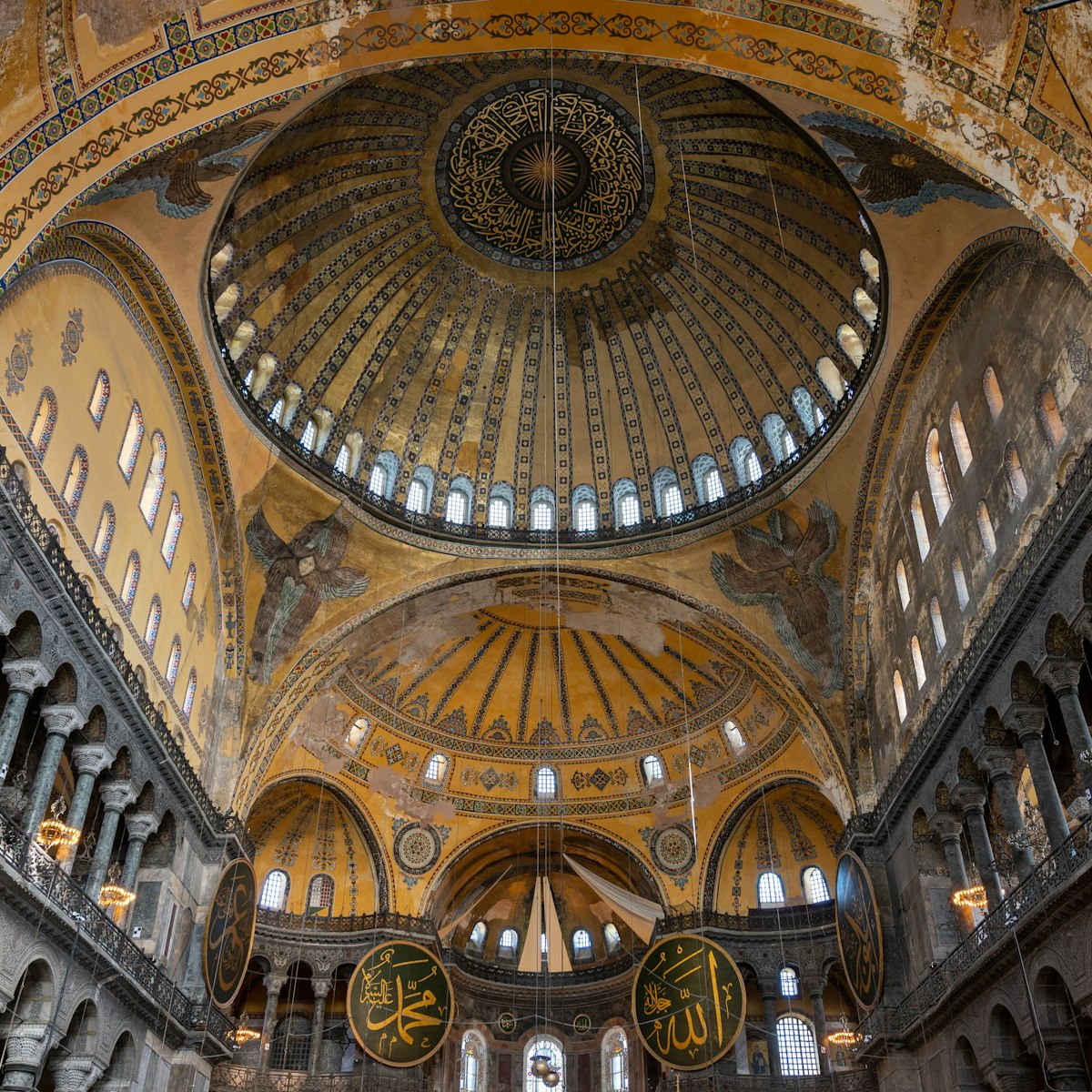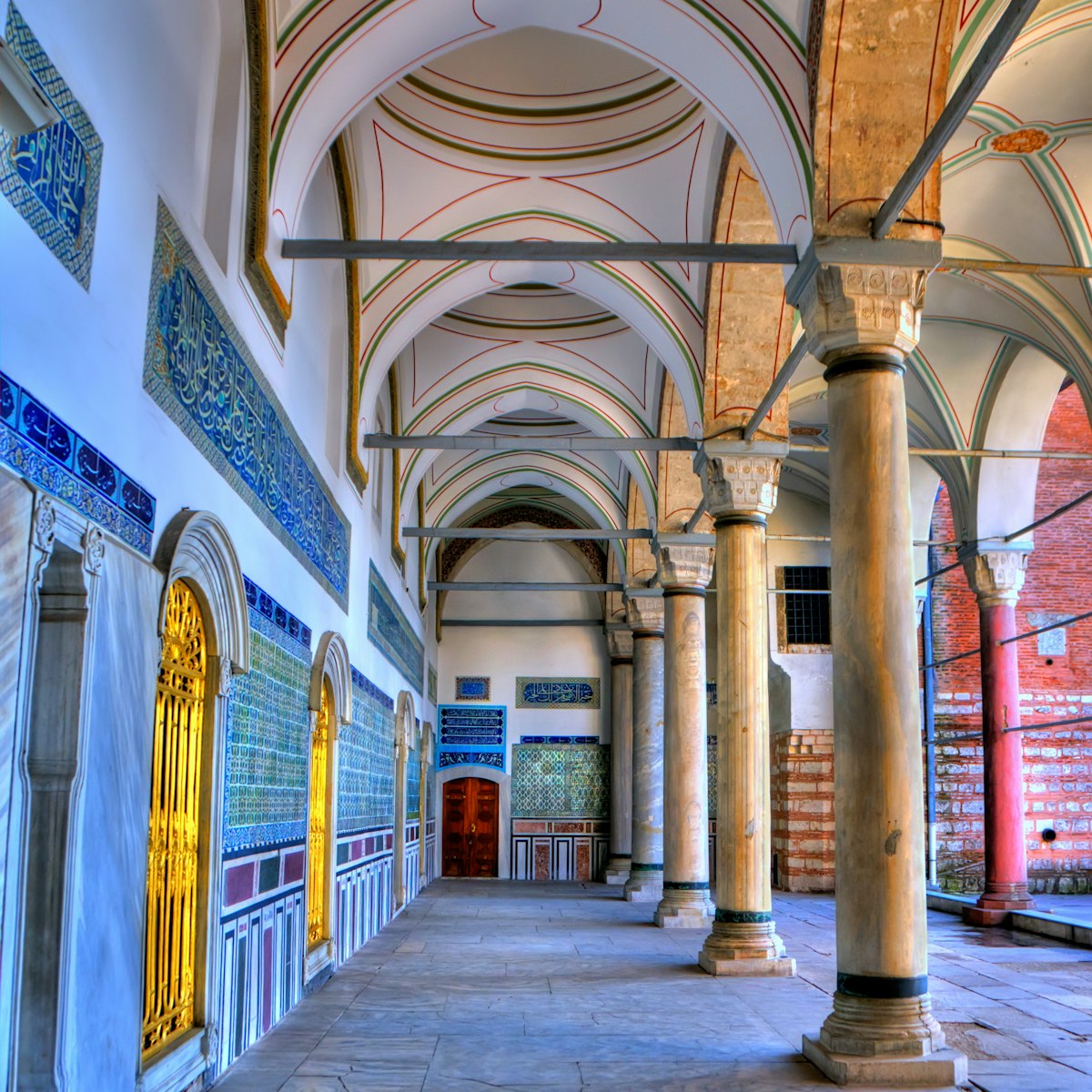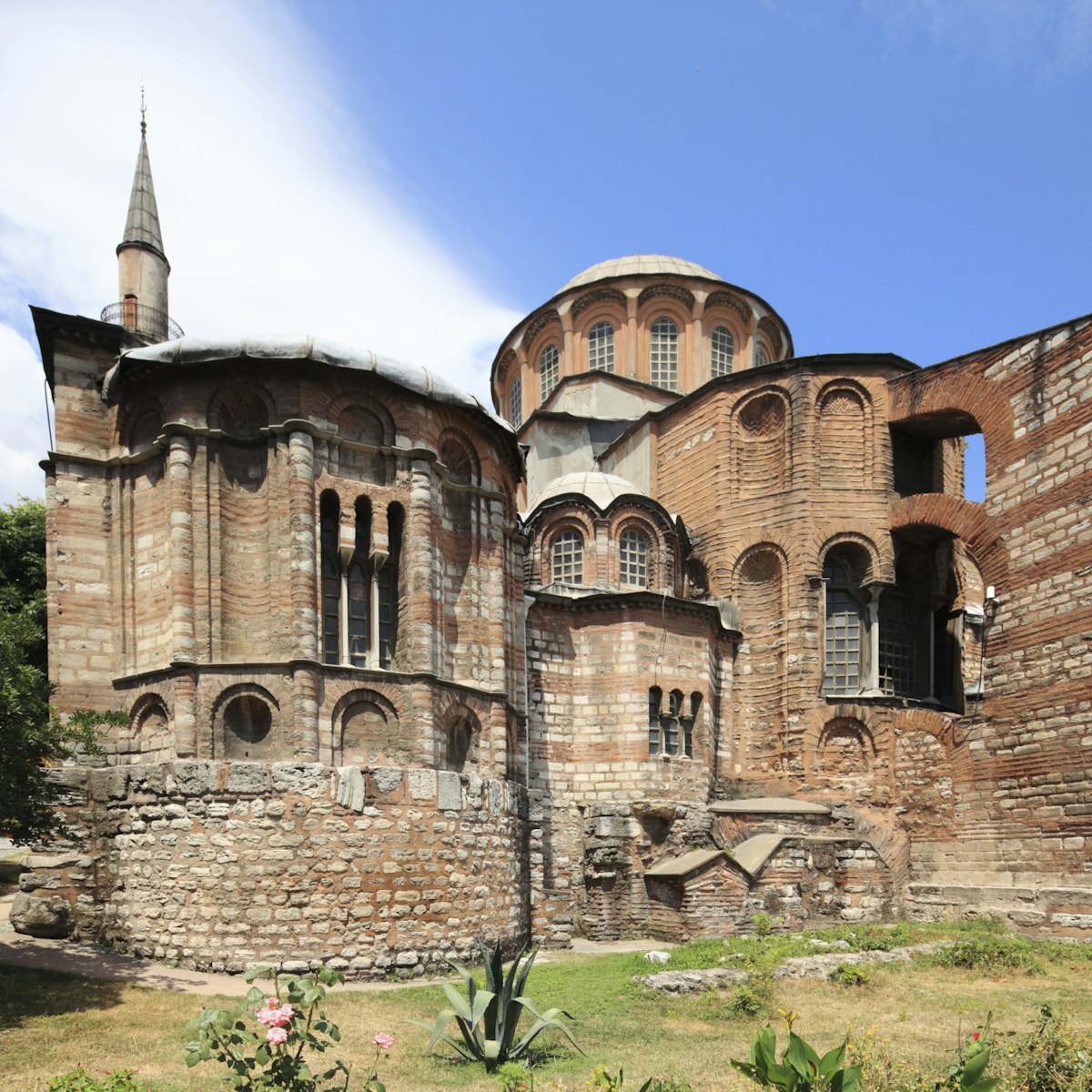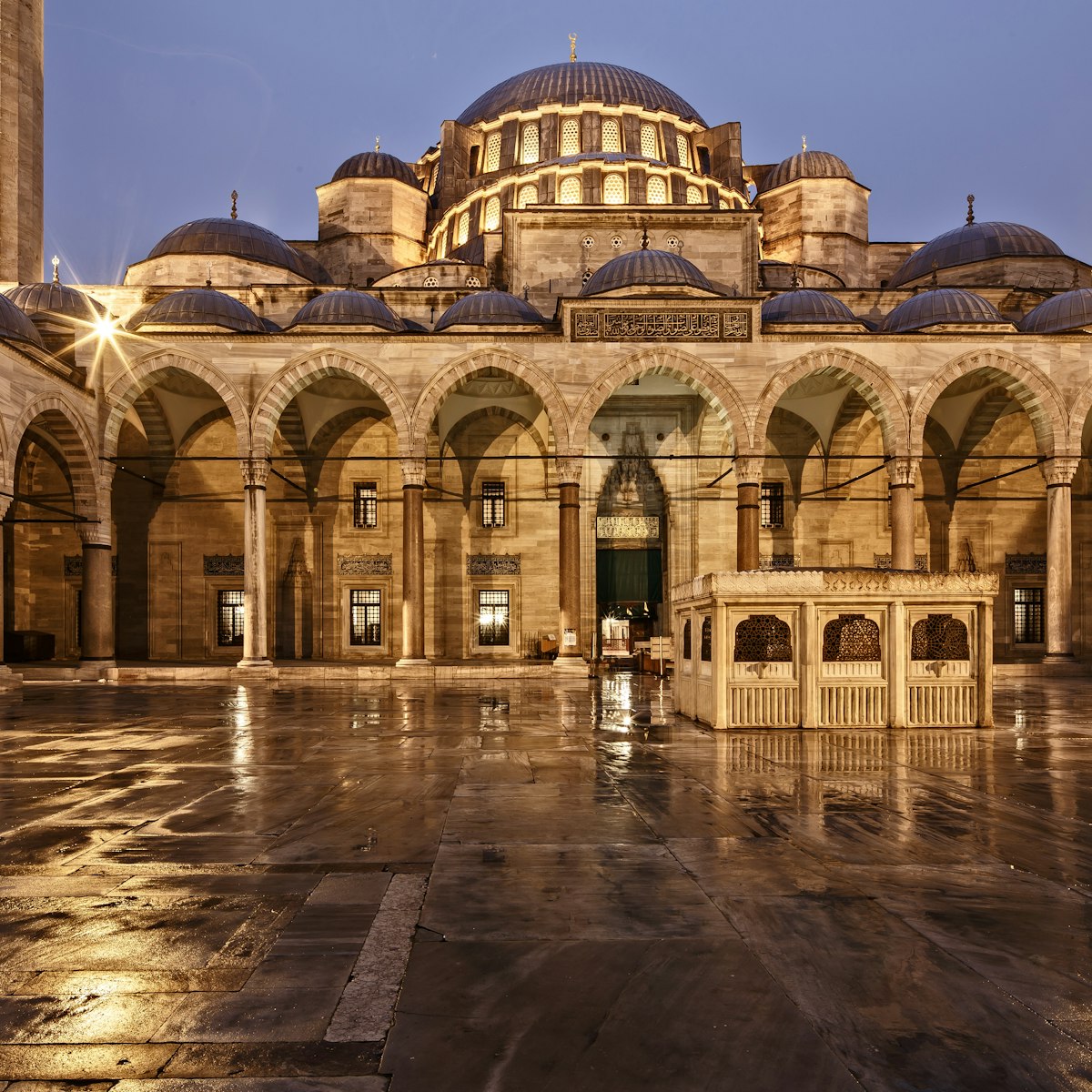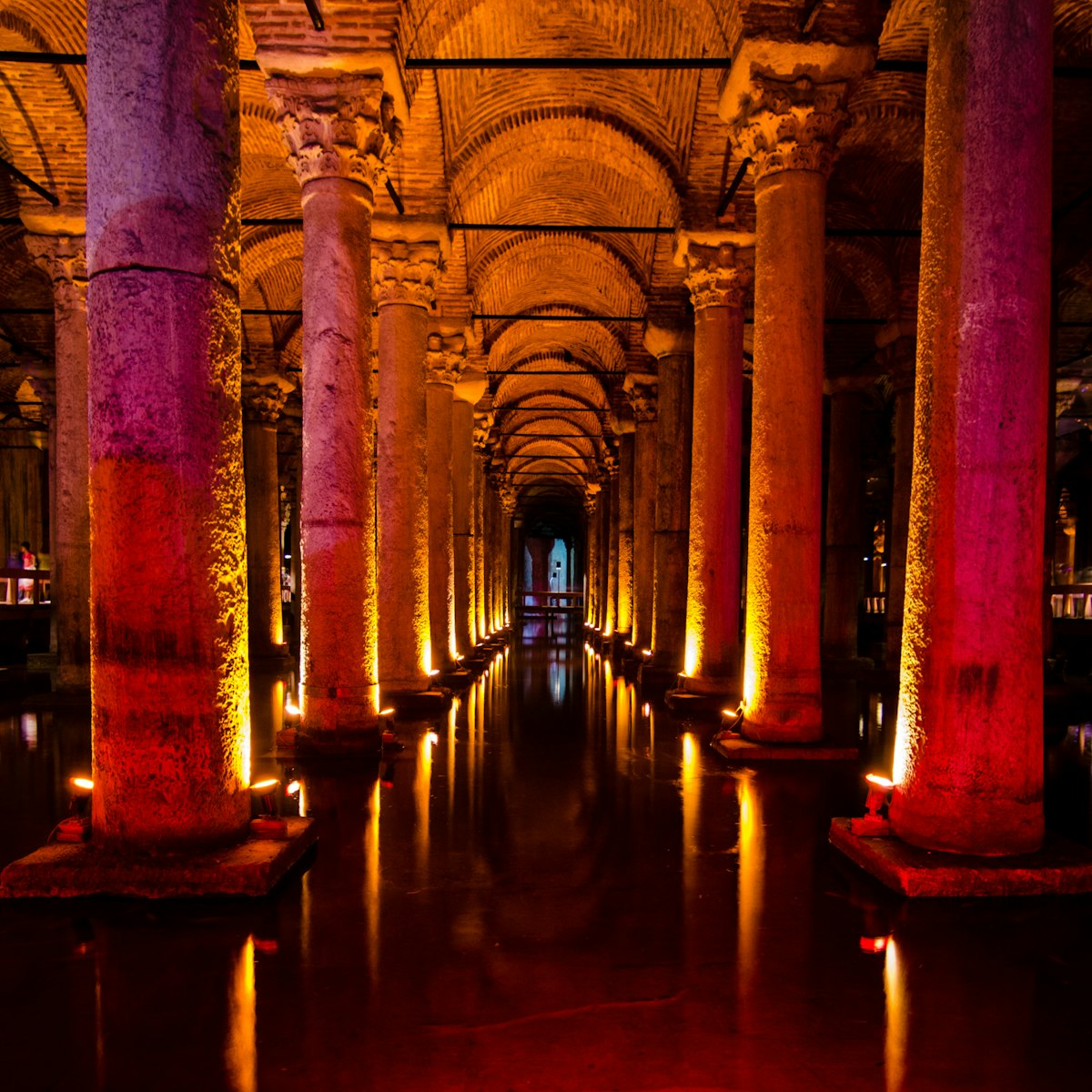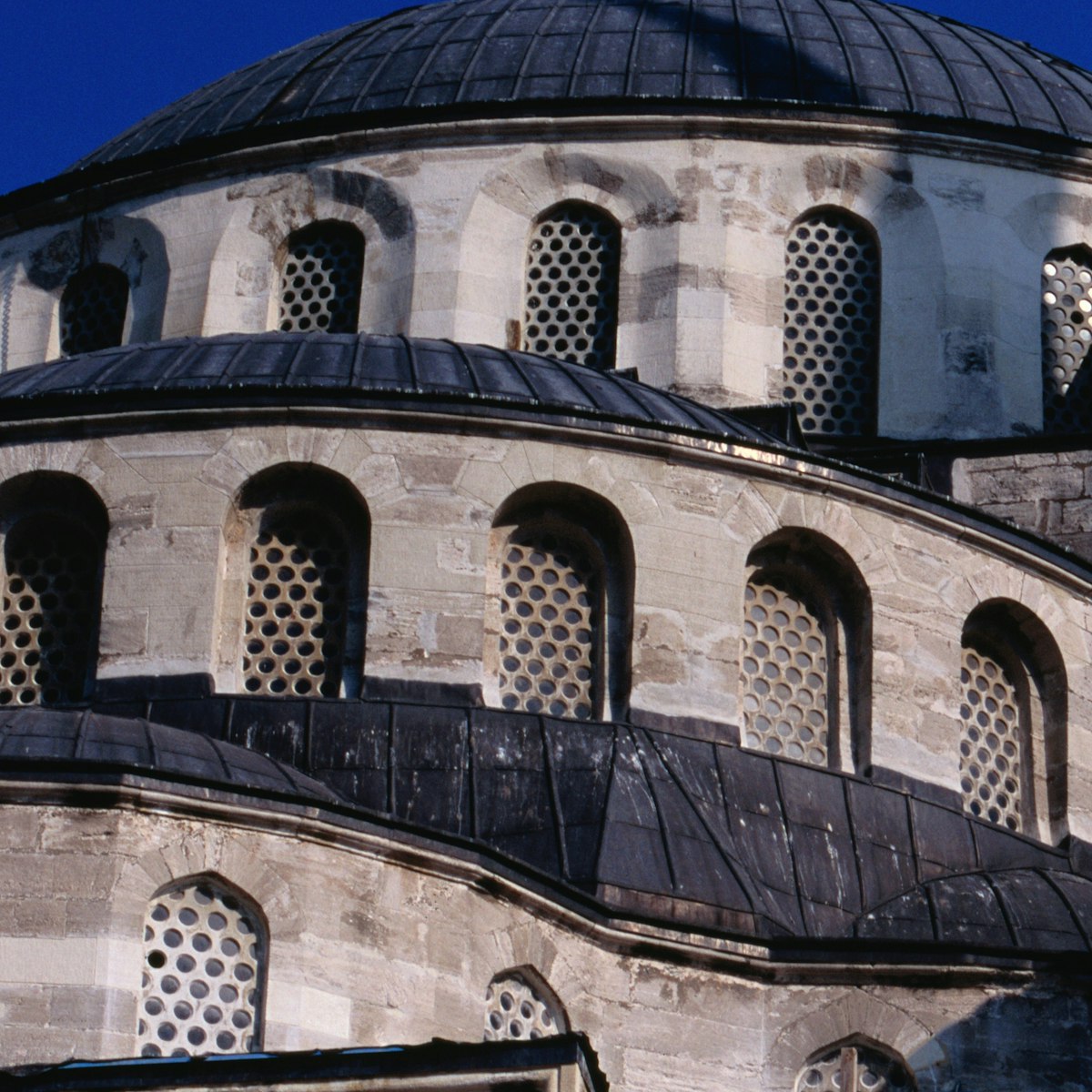Housed in an imaret (soup kitchen) added to the Aya Sofya complex in the 18th century, this museum is entered through a spectacular baroque gate and gives the visitor an excellent overview of the history of Anatolian carpet making. The carpets, which have been sourced from mosques throughout the country, date from the 14th to 20th centuries.
There are three galleries, each entered through Tardis-like humidity-controlled entrances. The first, in the me'kel (dining hall), features early Anatolian-era carpets with geometric and abstract designs; these are sometimes called Holbein carpets in honour of Dutch artist Hans Holbein the Younger, who often depicted them in his paintings. Also here are examples of the best-known type of Turkish carpets: Uşak (Ushak) carpets of the 16th and 17th centuries.
The second gallery, in the aşhane (kitchen), displays rugs with central and eastern Anatolian motifs including star-shaped medallions and keyholes; the latter is said to have been inspired by the mosque mihrab (panels decode the many symbols' meanings). Don't miss the particularly fine red-and-yellow 19th-century Hereke rug, on the left at the end of the room, from the Mustafa Mosque in Sirkeci.
The third gallery, in the fodlahane (bakery), is the most impressive, with huge 17th- and 18th-century Uşak carpets from the Süleymaniye Mosque and another 19th-century example from the Blue Mosque. The latter is also a late example of a saf prayer rug; several people could pray side by side in a saf (line) on its multiple mihrab decorations.
Note that the Museum Pass İstanbul isn't valid here.
